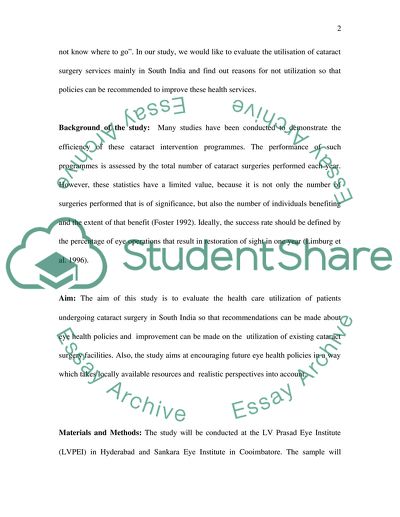Cite this document
(“Evaluation of the Utilisation of Cataract Surgery Services in South Article”, n.d.)
Evaluation of the Utilisation of Cataract Surgery Services in South Article. Retrieved from https://studentshare.org/health-sciences-medicine/1708862-evaluating-the-success-of-health-service-utilisation-of-cataract-surgery-following-visual-screening-camps-in-india
Evaluation of the Utilisation of Cataract Surgery Services in South Article. Retrieved from https://studentshare.org/health-sciences-medicine/1708862-evaluating-the-success-of-health-service-utilisation-of-cataract-surgery-following-visual-screening-camps-in-india
(Evaluation of the Utilisation of Cataract Surgery Services in South Article)
Evaluation of the Utilisation of Cataract Surgery Services in South Article. https://studentshare.org/health-sciences-medicine/1708862-evaluating-the-success-of-health-service-utilisation-of-cataract-surgery-following-visual-screening-camps-in-india.
Evaluation of the Utilisation of Cataract Surgery Services in South Article. https://studentshare.org/health-sciences-medicine/1708862-evaluating-the-success-of-health-service-utilisation-of-cataract-surgery-following-visual-screening-camps-in-india.
“Evaluation of the Utilisation of Cataract Surgery Services in South Article”, n.d. https://studentshare.org/health-sciences-medicine/1708862-evaluating-the-success-of-health-service-utilisation-of-cataract-surgery-following-visual-screening-camps-in-india.


